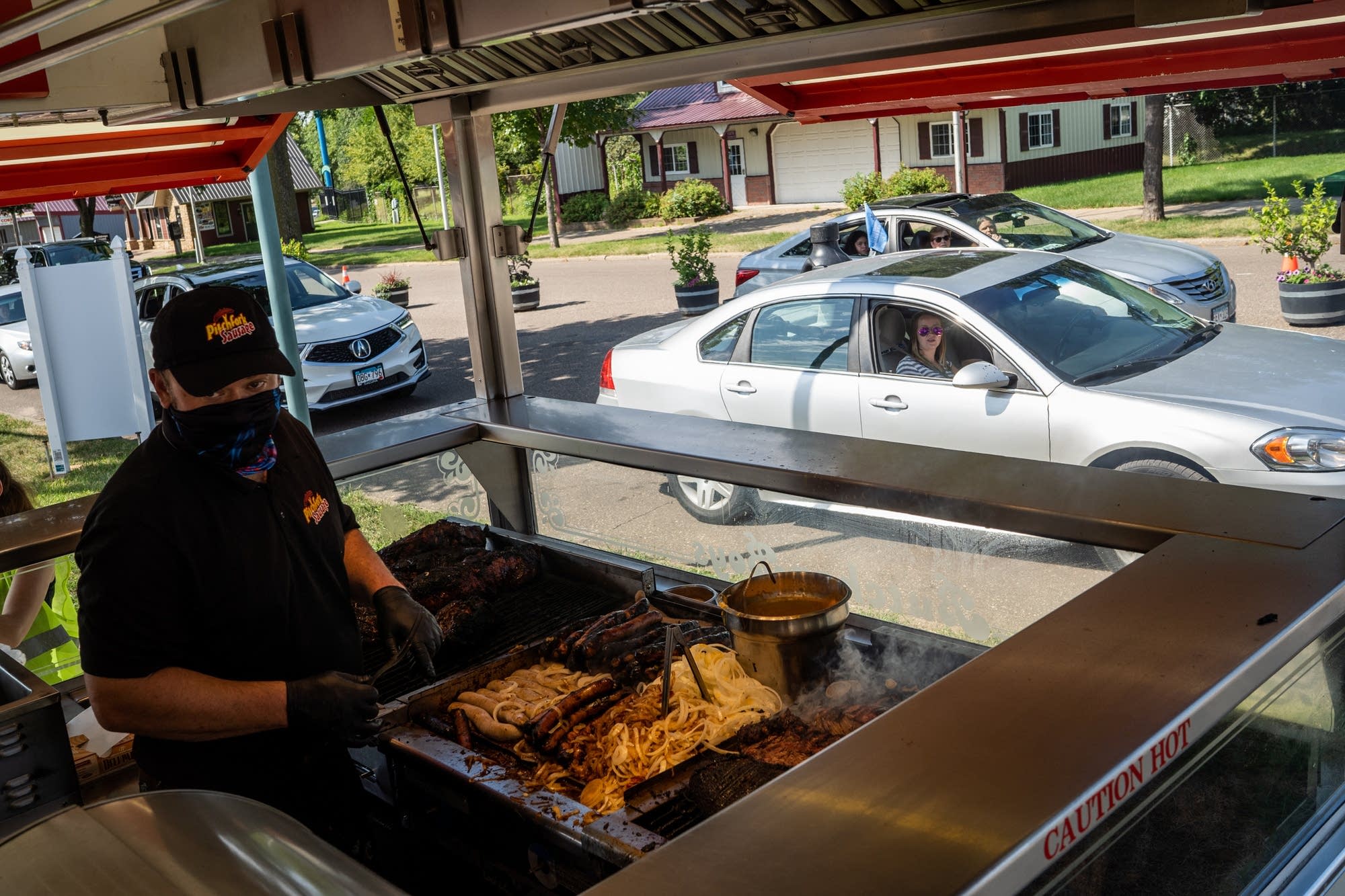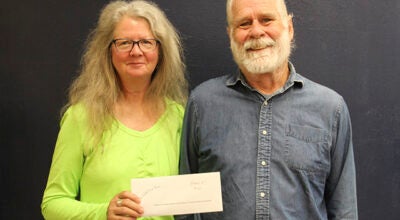Meeting friends this Labor Day weekend? Here’s 5 ways to stay COVID-safe
Published 1:34 pm Saturday, September 5, 2020

- Brendan Szala of Pitchfork Sausage prepares food inside the food stand as cars drive past during the State Fair Food Parade in Falcon Heights, Minn., on Friday, Aug. 21. State infectious disease director Kris Ehresmann shared a few tips for how to socialize safely this Labor Day weekend during the pandemic. Evan Frost/MPR News
|
Getting your Trinity Audio player ready...
|
By Minnesota Public Radio News
Throughout August, Minnesota’s COVID-19 cases have continued their daily, steep climb. With hundreds of new infections each day, public health officials are again sounding the alarm ahead of the Labor Day weekend.
But as community spread — in which people who test positive for COVID-19 can’t identify a specific source of infection — grows, how can people take advantage of the waning days of summer, safely?
State infectious disease director Kris Ehresmann shared a few tips for how to socialize safely in the pandemic.
1) Meet outside
Outdoor activities — from hiking and biking to fishing and more — have been explicitly allowed since Minnesota began issuing precautions to slow the coronavirus in March.
Later in the summer, as “stay at home” orders became “stay safe” orders, health officials encouraged people to get outside.
It’s not just because Minnesota’s beautiful summers are fleeting, and being outdoors can do wonders for combating stress and supporting mental health. While scientists continue to study the novel coronavirus, researchers say that being outside in fresh, circulating air helps disperse the respiratory droplets that spread the disease.
But it’s important to remember, Ehresmann says, that “being outside in and of itself does not mean that you are not at risk for COVID.”
It’s been a source of significant confusion, she said.
Outside, there’s better airflow, there’s more space for distancing and there’s gorgeous summer sunlight. But people still need to follow the guidelines health officials have been repeating for months about masks and distance.
2) Keep things small
“All things being equal,” Ehresmann said, “outside is better than inside.”
But even if your social plans include meeting people outside, she said, people still should keep their groups small and manageable.
State COVID-prevention rules allow outdoor gatherings of 25 people or fewer, but only if those people can maintain social distancing.
Small groups are ideal, with people who live in the same household sticking together, and maintaining a distance from people in different households.
“People have taken [state guidance] to mean that if you are outside that it’s a go, that everything’s just fine,” Ehresmann said, “but COVID can still transmit when you’re outside.”
Above all, it’s best to avoid large gatherings, she said.
3) Arrive in masks — and plan ahead
Mask-wearing has become the norm — and the rule — in public spaces across Minnesota.
But don’t leave your mask at home when visiting friends over the holiday weekend — even if you’re meeting outdoors.
Ehresmann recommends having a plan for logistics. Where will people sit? How will they arrive? What will they bring and what will they share?
The best plan involves everyone wearing masks when they’re en route. Wear them when you’re arriving, wear them when you’re setting things up and wear them as you move around.
It’s okay to take them off once you’re situated — at a distance.
“One of the big problems is, when you’re mobile, it’s harder to maintain that six feet of distance,” she said.
4) Set up chairs
“If you have plans for Labor Day weekend and it involves bringing together a couple of families, and you have the space to be outside,” bring chairs, Ehresmann said.
That allows people to have a little more control over that distancing.
“Set their chairs up so they can be six feet apart, and [if] you’re sharing a meal and things, that should be fine,” Ehresmann said.
And keep those masks on until chairs are set up, she said.
“Once you’re seated, you can go ahead and take the mask off,” she said. “I just know that when you’re moving and walking, it’s harder to maintain that strict distance, whereas once your chairs are plopped down and you’ve eyeballed the six feet, then you’re fine.”
5) Pay attention to where you’re standing
Even outside, it’s important to stay distanced, Ehresmann said.
Just because you’re outside doesn’t mean the virus can’t be passed along — and now that community transmission is happening statewide, vigilance is even more critical.
“We’re seeing the impact of people not socially distancing and not paying attention” to things like masks and other guidelines, she said. State health officials have traced outbreaks tied to outdoors, too, she said.
So if you do get together with people outside, she said, you need to be attentive to health officials’ guidance.
“Being outside doesn’t mean that all the guys can stand around the grill and comment on how the meat is cooking,” she said. “That means that you really have to think about all those things when you’re with people from other households.”
Bonus: What about food?
That’s a tricky one — and depends on the level of risk each person is comfortable with, Ehresmann said.
The most cautious approach, she said, is for everyone to bring their own food.
But really, she said, “that’s up for individuals to decide what level of caution they want to take on.”
The biggest concern: Social distance.




